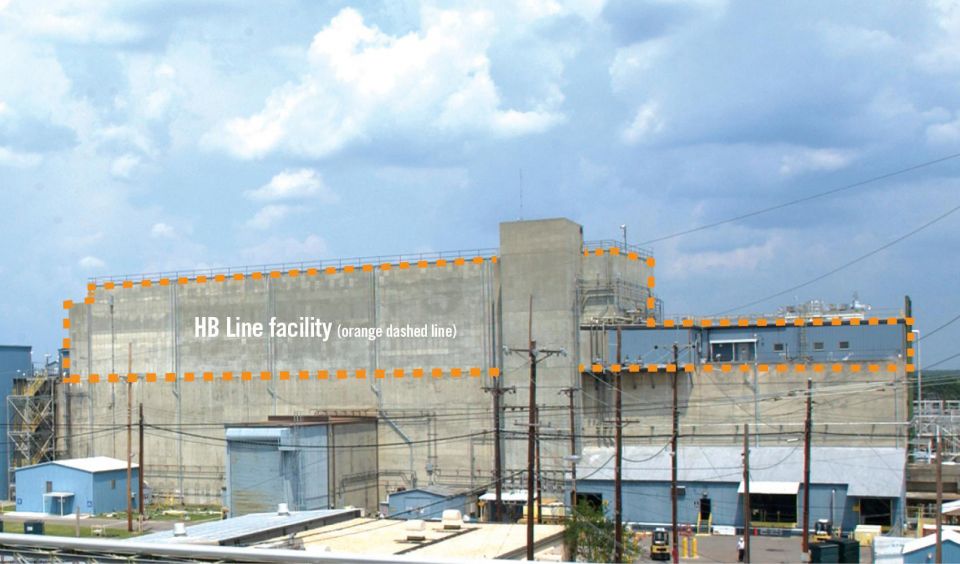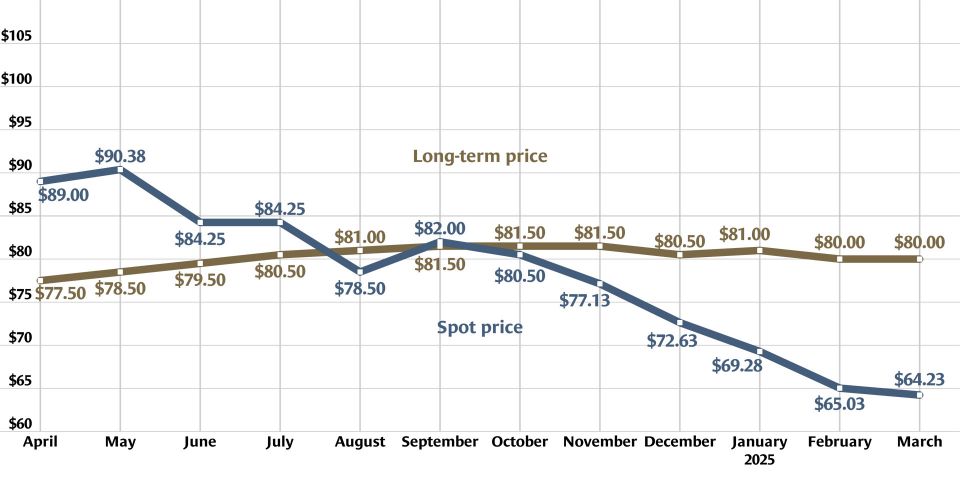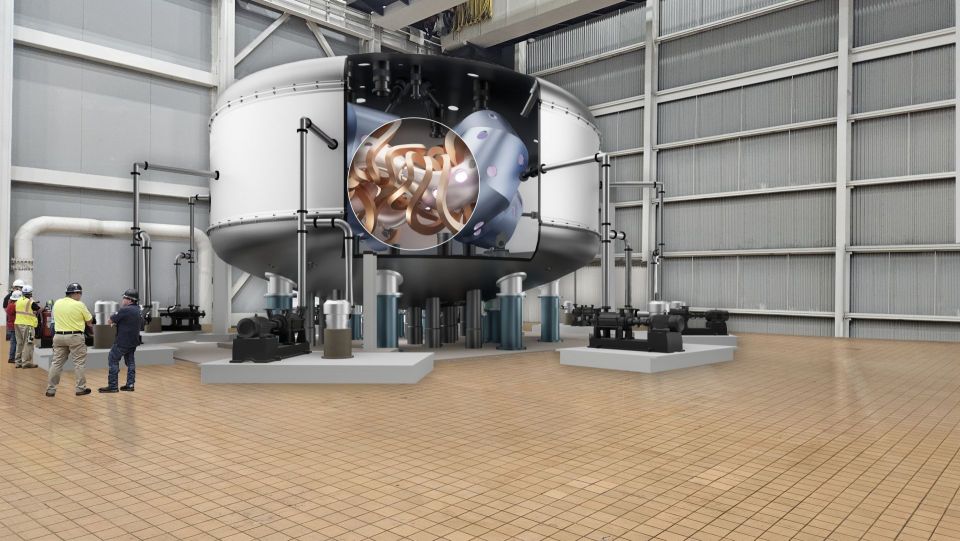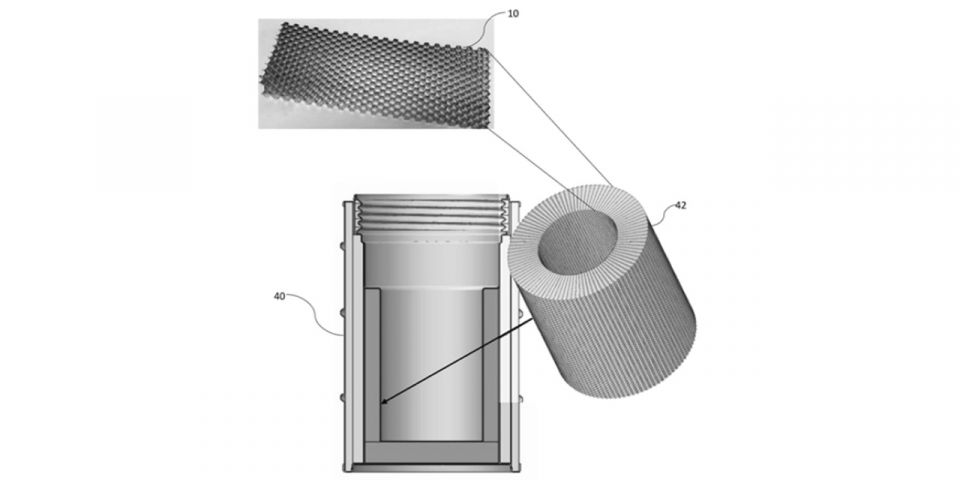BWXT to probe options for new centrifuge pilot plant under contract with NNSA

BWX Technologies announced on August 26 that its Nuclear Fuel Services subsidiary had received a contract from the National Nuclear Security Administration for a yearlong engineering study of a pilot plant capable of testing a gas centrifuge uranium enrichment technology developed at Oak Ridge National Laboratory and producing domestic-origin enriched uranium the NNSA can use for multiple national security purposes. BWXT, which has a long history of providing fuel fabrication and downblending services for the federal government, has not—until now—included enrichment in its portfolio.
Now, the DOE and NNSA are effectively supporting two gas centrifuge uranium enrichment technologies—Centrus’s American Centrifuge, which is producing small quantities of high-assay low-enriched uranium for power reactors, and ORNL’s DUECE, which the NNSA hopes could supply the low-enriched uranium it needs for a supply of tritium and the high-enriched uranium it needs to fuel naval reactors.
Enriched and unobligated: Enriched uranium can be used for nuclear power and all its societal benefits, as well as for nuclear weapons, and U.S. policy and international agreements require that any uranium used for weapons purposes—including the LEU used to produce tritium to maintain the nation’s nuclear deterrent—be “unobligated,” or free of peaceful use restrictions. That requires that U.S.-origin uranium be enriched domestically, using technology developed in the United States.
Previously, that unobligated uranium was enriched using the gaseous diffusion technology first deployed in Oak Ridge, Tenn., during the Manhattan Project. The Paducah Gaseous Diffusion Plant was the last of its kind, built in Kentucky in 1952 and shut down in 2013 after years of supplying uranium for national security needs and commercial nuclear power plants. It has yet to be replaced with a more efficient technology developed in the United States.
NNSA administrator Jill Hruby spoke at the East Tennessee Economic Council on August 23, where she laid out the NNSA’s plan for future uranium supplies. The country, Hruby said, is “making investments to reestablish a uranium enrichment program in the United States for defense purposes; a capability lost at the end of the Cold War. Our priority is to produce low-enriched uranium to fuel tritium-producing nuclear reactors. Since 2016, our efforts have been focused on research and development efforts at Oak Ridge National Laboratory through the Domestic Uranium Enrichment Centrifuge Experiment, or DUECE. Eventually, DUECE technology will be deployed in a pilot plant to mature and characterize the technology. Over the long term, we hope to leverage this pilot plant for future highly enriched uranium production for naval nuclear propulsion.”
What the deuce is DUECE? ORNL has developed and managed DUECE for NNSA’s Domestic Uranium Enrichment (DUE) program since 2016. According to the scope of work spelled out in a request for proposals released in March for the Domestic Uranium Enrichment Pilot Plant Options Study, “the DUE program strategy seeks to ensure future national security production capability by leveraging the pilot plant for future HEU production use and partnering with commercial industry where appropriate.”
Researchers at ORNL are already planning to demonstrate the DUECE technology in an engineering-scale cascade testbed at the lab, according to the RFP. The study that BWXT is now contracted to carry out is for a pilot plant that would follow the engineering-scale cascade to “demonstrate the DUE centrifuge performance, reliability, and life-cycle costs for the NNSA,” the company said. Fluor will serve as the engineering, procurement, and construction service provider.
BWXT puts it this way: “There is a need to develop and demonstrate centrifuge technologies to better characterize performance, reliability, and life-cycle costs prior to selecting a path forward for a production-scale capability.”
More on BWXT’s first foray into enrichment: According to the scope of work, BWXT “shall provide detailed options to deploy a DUECE LEU pilot plant that can be repurposed to HEU production. Options shall identify specific locations, facilities, centrifuge designs, equipment, staffing, and assessment of benefits and risks.”
The scope of work also specifies that “The study must be performed by a company that has a demonstrated ability and willingness to deploy and operate this pilot plant at facilities or properties owned (or leased) and operated by the company.” BWXT’s Nuclear Fuel Services plant in Erwin, Tenn., is one of two Category I facilities licensed by the Nuclear Regulatory Commission to store and process HEU.
The contract only covers a deployment study. Future pilot plant work could be performed in three phases: (1) facility design, licensing, long-lead procurements, and site preparation; (2) facility construction, cascade manufacture/installation, and pilot operations; and (3) transition to HEU production.
“BWXT’s entry into the domestic uranium enrichment market is driven by our unwavering commitment to national security, and we look forward to working with NNSA and ORNL to advance the DUECE program,” said Kevin McCoy, president of BWXT Government Operations. “Given BWXT’s unique nuclear operations infrastructure and NRC Category 1 uranium handling and processing licenses, this venture aligns well with BWXT’s long-standing strategy to expand its role in the national security nuclear fuel cycle.”
Centrifugal forces: The centrifuge enrichment technology that Centrus is demonstrating in Piketon, Ohio, under contract with the DOE was at one time expected to serve the needs of both the NNSA and commercial customers. That technology, developed by the DOE beginning in the 1980s, has not been rolled out on the scale and timeline originally envisioned.
In the fall of 2015, the DOE cut off funding for Centrus’s ongoing AC100 LEU enrichment demonstration, and it was around this time that DUECE research began at ORNL. Later, the DOE resumed funding for Centrus. In October 2019, the DOE contracted with Centrus for a three-year demonstration program with a government cost share of up to $115 million for a 16-machine cascade to produce HALEU; in November 2022 that contract was extended, and Centrus produced its first HALEU in October 2023.
In a December 2020 Government Accountability Office report on federal agency uranium management, the GAO noted that the “NNSA’s needs for unobligated enriched uranium are relatively small compared with the large commercial uranium demands, which can be satisfied by obligated enriched uranium. NNSA’s ongoing [analysis of alternatives] process is therefore considering options for a government-built enrichment capability dedicated to meeting uranium requirements for defense purposes.”
Senate support: The Senate Armed Services Committee has indicated that it wants to include new measures on domestic uranium enrichment in the 2025 National Defense Authorization Act.
While the 2025 NDAA has a ways to go, in the Senate and the House and in conference, as marked up by the Senate committee S. 4638 calls for the restoration of a domestic uranium enrichment capability and directs the DOE and NNSA to “conduct an assessment to evaluate at least 2, but not more than 4, geographically disparate possible locations in the United States that would by 2035 be best suited to host a modular, scalable facility for the domestic enrichment of unencumbered uranium, including highly enriched uranium suitable for defense applications.”






